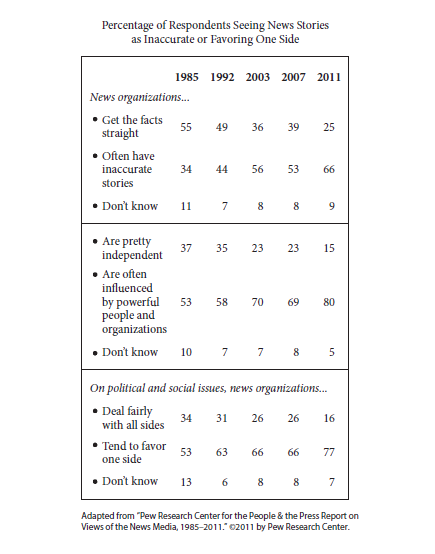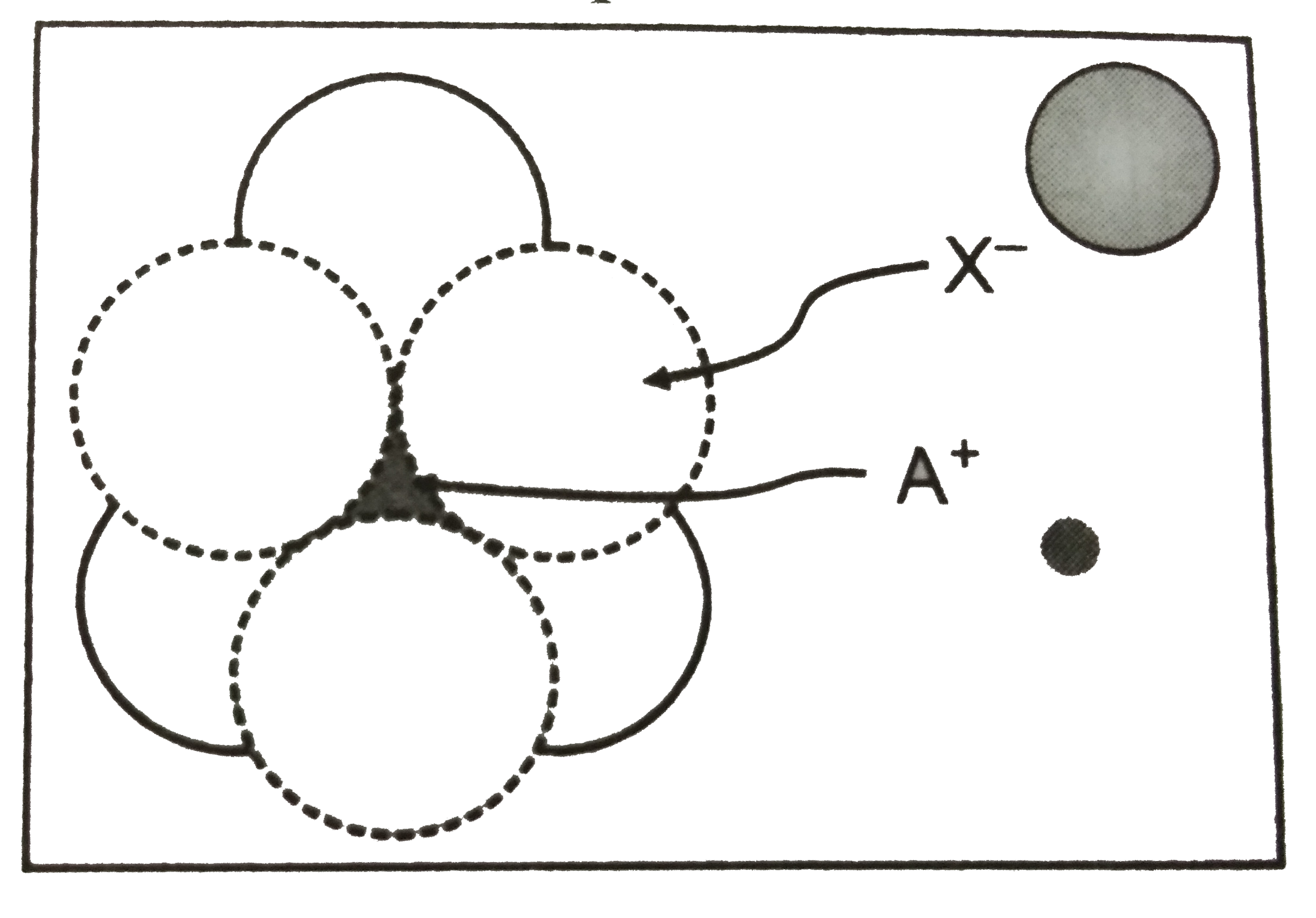This passage is adapted from Stephen Coleman, Scott Anthony, and David E. Morrison, “Public Trust in the News.” ©2009 by Stephen Coleman.
The news is a form of public knowledge. Unlike personal or private knowledge (such as the health of one’s friends and family, the conduct of a private hobby, a secret liaison), public knowledge increases in value as it is shared by more people. The date of an election and the claims of rival candidates, the causes and consequences of an environmental disaster, a debate about how to frame a particular law, the latest reports from a war zone—these are all examples of public knowledge that people are generally expected to know in order to be considered informed citizens. Thus, in contrast to personal or private knowledge, which is generally left to individuals to pursue or ignore, public knowledge is promoted even to those who might not think it matters to them. In short, the circulation of public knowledge, including the news, is generally regarded as a public good which cannot be solely demand-driven.
The production, circulation, and reception of public knowledge is a complex process. It is generally accepted that public knowledge should be authoritative, but there is not always common agreement about what the public needs to know, who is best placed to relate and explain it, and how authoritative reputations should be determined and evaluated. Historically, newspapers such as The Times and broadcasters such as the BBC were widely regarded as the trusted shapers of authoritative agendas and conventional wisdom. They embodied the Oxford English Dictionary’s definition of authority as the “power over, or title to influence, the opinions of others.” As part of the general process of the transformation of authority whereby there has been a reluctance to uncritically accept traditional sources of public knowledge, the demand has been for all authority to make explicit the frames of value which determine their decisions. Centres of news production, as our focus groups show, have not been exempt from this process. Not surprisingly perhaps some news journalists feel uneasy about this renegotiation of their authority:
Editors are increasingly casting a glance at the “most read” lists on their own and other websites to work out which stories matter to readers and viewers. And now the audience—which used to know its place—is being asked to act as a kind of journalistic ombudsman, ruling on our credibility (broadcast journalist, 2008).
The result of democratising access to TV news could be political disengagement by the majority and a dumbing down through a popularity contest of stories (online news editor, 2007).
Despite the rhetorical bluster of these statements, they amount to more than straightforward professional defensiveness. In their reference to an audience “which used to know its place” and conflation between democratisation and “dumbing down,” they are seeking to argue for a particular mode of public knowledge: one which is shaped by experts, immune from populist pressures, and disseminated to attentive, but mainly passive recipients. It is a view of citizenship that closes down opportunities for popular involvement in the making of public knowledge by reinforcing the professional claims of experts. The journalists quoted above are right to feel uneasy, for there is, at almost every institutional level in contemporary society, scepticism towards the epistemological authority of expert elites. There is a growing feeling, as expressed by several of our focus group participants, that the news media should be “informative rather than authoritative”, the job of journalists should be to “give the news as raw as it is, without putting their slant on it”, and people should be given “sufficient information” from which “we would be able to form opinions of our own.”
At stake here are two distinct conceptions of authority. The journalists we have quoted are resistant to the democratisation of news: the supremacy of the clickstream (according to which editors raise or lower the profile of stories according to the number of readers clicking on them online), the parity of popular culture with “serious” news, the demands of some audience members for raw news rather than constructed narratives.

As used in line 74, “raw” most nearly means
unfiltered.
exposed.
harsh.
inexperienced.
The correct Answer is:A
In lines 73-75, the passage states the modern belief that “the job of journalists should be to ‘give the news as raw as it is, without putting their slant on it.’” In this context, the word “raw” means unfiltered or in its most basic state.
Choices B, C, and D are incorrect because in the context of news without any “slant on it,” the word “raw” implies something unfiltered, not something unprotected or uncovered (choice B), severe (choice C), or untried or unproven (choice D).
Similar Questions
एक यौगिक में तत्व A तथा B घनीय संरचना में क्रिस्टलीकृत होते हैं । परमाणु A घन के कोनो पर तथा B फलक के केंद्र पर उपस्थित है । यौगिक का सूत्र है :
View Solutionएक यौगिक A तथा B तत्वों से मिलकर बना है । जब A परमाणु कोने पर तथा B परमाणु केंद्र पर हो, तो यह यौगिक घनाकार जालक में क्रिस्टल बनाता है । यौगिक का साधारण सूत्र होगा :
View Solutionप्रयोग के आधार पर एक धातु ऑक्साइड का सूत्र M0.98O पाया गया । यदि धातु M इस ऑक्साइड में M2+ और M3+ के रूप में विघमान हो तो धातु का जो प्रभाज M3+ के रूप में होगा, वह है :
View Solutionठोस AX में A+ आयन के चारो और X− आयन की व्यवस्था है, जैसा की चित्र में दर्शाया गया है (सही माप सूचक नहीं है) । यदि X− आयन की त्रिज्या 250 pm हो तो A+ आयन की त्रिज्या है :

View Solutionएक अभिक्रिया इस प्रकार से है -
2Ag++Cd→2Ag+Cd2+
अभिक्रिया Ag+/Ag व Cd2+/Cd के लिए मानक अपचयन विभव +0.80 तथा −0.40V है | (a) सेल का मानक वाहक बल (E∘)क्या है ?
(b) यदि Cd की सांद्रता 1M से घटाकर 0.1 M कर दें तो विधुत वाहक बल पर क्या प्रभाव होगा ?
View Solutionयदि S कोई प्रतिदर्श समष्टि तथा E कोई घटना है तो घटना E की प्रायिकता P(E)=.....
View SolutionH2SO4 के एक विलयन का घनत्व 1.02gcm−3 है तथा भरानुसार इसका सांद्रण 15% है. विलयन की मोलरता एव मोललता की गणना कीजिये.
View Solutionसंपारसरि विलयन का ………….. समान होता है .
View Solution
